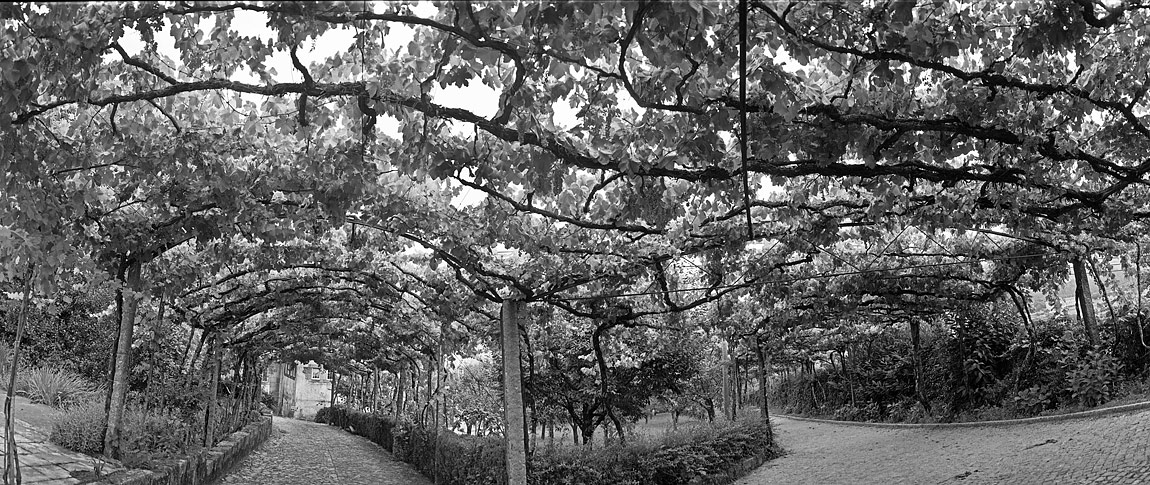Portugal's northwest region - the Entre-Douro-e-Minho region, with relatively fresh and humid summers, produces wine grapes with a low sugar content and a wine - the "Vinho Verde", with a low alcohol content, close to 10° and high acidity.
In the 18th century, these vines were cultivated close to trees (sycamore, cherry, chestnut, poplar, elm, among others) around which they grew, reaching 3-6 meters in height – this is the "enforcado" vine, a system much admired by foreigners that visit the country, that can still be seen today but which has been abandoned due to the high amount of labour required to harvest the grapes to make wine. As an alternative, the vine began to be trained in "latadas" - stone or wooden pillars linked by iron wires, which raise the plant 3-5 meters above the ground. In this way, the plant leaves the ground floor space free, which can be used as a place to pass through or grow other plants, such as potatoes. These two ways of managing the vineyard result from the high vegetative growth that the plant has in this region as a consequence of the air humidity that is felt even in summer.
The Monastery of Santa Escolástica, of the female Benedictine order, a building built in 1937 according to a project by Raul Lino in Roriz, has a lot of cultivated land around it in the Benedictine spirit, and a large vineyard precedes its entrance in "latada". When walking around the exterior of the Monastery of Santa Escolástica in June 2021, on a beautiful bright sunny day, I was fascinated by the play of light and shadow that this "latada" provided. Underneath, the cobbled paths made walking around and savouring the colours, light and shadows possible. To try to capture the grandeur of the space, I used an analogue panoramic camera (Noblex Pro), which produces 5x12 cm negatives, and black-and-white film (Ilford FP4 Plus). There is some distortion in the image but the breadth of the view reflects well the labyrinth of paths beneath the large "latada".


